Yoga is really for each physique. However doing yoga the “proper” manner, with an emphasis on correct respiration, alignment, and type, may also help make sure you reap yoga’s advantages whereas conserving your physique protected.
“Alignment is essential,” says BODi’s Yoga52 teacher Micki Duran. “Yoga poses ought to assist strengthen the physique, not trigger harm.”
The right yoga varieties you see demonstrated in basic yogic texts and in packages like Yoga52 and 3 Week Yoga Retreat had been developed for causes that go far past the aesthetic.
“Despite the fact that the classical pose (and alignment) could also be more durable to do, that’s the place you’re most secure,” says Dr. Loren M. Fishman, M.D., who studied extensively with B.Okay.S. Iyengar and has printed analysis on yoga’s therapeutic results. “There’s much less pressure on the ligaments, tendons, and cartilage within the classical pose than in different variations.”
Duran says it’s regular to really feel pissed off if you aren’t “mastering” yoga type quick sufficient or transferring the best way you need. She compares it to studying to stroll: “You simply be taught, observe, and at some point you get it.”
However don’t rush it — that’s how accidents occur. Under is a listing of a number of the most typical yoga type errors and the right way to repair them. Most seasoned practitioners have made the identical yoga type errors you see demonstrated.
“Your yoga poses might not seem like the image or anybody else within the class, however discover how they really feel,” recommends Ann Swanson, M.S., C-IAYT, E-RYT 500. Yoga shouldn’t harm, however you must nonetheless really feel one thing.
1. Cupping Your Arms When on the Flooring

Ever discover your palms begin to raise off the ground in poses like downward going through canine? “The wrists are a typical website of harm, which might occur after we don’t distribute weight appropriately all through the arms,” says Yoga52 teacher Odette Hughes.
The repair: Flatten these arms. “Often, merely bringing consideration to your arms is sufficient to appropriate what’s occurring,” says Hughes. “I ask college students to maintain their fingers unfold aside and to press evenly from the pinkie aspect to the thumb aspect.”
2. Dipping Too Low in Chaturanga

Chaturanga dandasana is a difficult, but frequent pose, and it’s straightforward to go too low, particularly in vinyasa circulate courses the place it’s repeatedly used as a transition. “This might set off a shoulder harm by combining improper type and repetitive actions,” says Marie Grujicic-Delage, a Yoga52 teacher.
The repair: Modify your depth. “Decrease solely midway down so your elbows type 90-degree angles — by no means go decrease,” explains Grujicic-Delage. “Your shoulders ought to be in keeping with your hips and elbows.” When you can’t preserve that type, drop to your knees.
3. Straining Your Entrance Knee in Pigeon Pose

Pigeon pose feels so good within the hips, however oftentimes we put the entrance knee in danger to really feel extra of a stretch. “Most academics encourage college students to place their entrance shin parallel to the entrance of the mat,” says Yoga52 teacher Brent Laffoon.
If you are able to do that, nice! However forcing it may possibly pressure the ligaments in your knee.
The repair: Overlook parallel if that causes ache. “Simply pull the heel of your entrance leg in towards your groin, and let the thigh and knee level slightly bit extra ahead,” says Laffoon. “You’ll be able to nonetheless get an incredible stretch this manner. Actually, in case you have delicate knees, this will provide you with an excellent higher stretch.”
4. Rounding Your Backbone as You Fold Ahead

Throughout solar salutations and different sequences, you could be tempted to spherical your again as you fold ahead towards your toes. “As a suggestion, we wish to fold from our hips and never from our backs,” says Hughes. “This places plenty of stress on the decrease again whereas providing virtually no stretch in return.”
The repair: Discover area elsewhere within the pose. “Often, rounding your again tells me you might have tight hamstrings, which is totally OK,” says Grujicic-Delage. “You simply must bend your knees.” Maintain them bent as you come out of your ahead fold, too.
5. Misaligning Your Knee and Ankle

Many standing yoga poses contain lunging, and it’s frequent to see college students’ knees cave inward or bow outward relative to the ankle.
Your knee is a modified hinge joint, explains Swanson, so it may possibly rotate barely when flexed, as in a lunge or warrior pose. “When it rotates, it places uneven stress on the joint constructions, which might trigger injury over time,” she says.
The repair: Stack your knee immediately over your ankle. That manner, “stress on the joint constructions is extra evenly distributed, stopping potential harm,” says Swanson. “When you discover your knee at all times appears to fall in or out in a sure pose,” provides Hughes, “strive taking on extra space throughout the width of your mat.”
6. Scrunching Your Shoulders Up Round Your Ears

Scrunching occurs rather a lot in yoga as a result of we are likely to over-engage the higher trapezius muscle groups, says Swanson.
“When elevating the arms overhead like in warrior I or tree pose, individuals will usually raise their shoulders too excessive, squeezing them towards their ears,” she says. It additionally occurs in deep backbends like upward going through canine, the place “it compresses the cervical (neck) vertebrae,” says Hughes.
The repair: Calm down your shoulders. In standing poses with the arms raised overhead, discover a stability between squeezing your shoulders up and forcing them down. (“There’s a center manner,” says Swanson.)
If want be, widen your arms to shoulder distance. And in up canine, “press down rather a lot by means of each arms, hold your gaze ahead as a substitute of upward, and pull the highest of your head upward to maintain your neck lengthy,” advises Hughes.
7. Compressing Your Decrease Again in Backbends
“Backbend” is a slight misnomer — there’s much more happening than the title suggests. So, if you’re solely targeted on the bending half, you could find yourself feeling poses like camel or wheel in your decrease again.
“Any time you’re doing a backbend, it’s vital to make use of your legs and core to elongate the backbone,” says Laffoon. This prevents you from straining your decrease again.
The repair: Shift your focus. “In camel pose, the shins and tops of the toes (or balls of the toes if toes are tucked) ought to press firmly into the ground,” says Laffoon. “This not solely drives the hips ahead in a wholesome manner, it additionally helps create a basis from which the backbone can lengthen. The stomach ought to be engaged to guard the low again, the shoulders ought to be drawing right down to create area for the thoracic backbone to arch, and the chest ought to be lifted.”
8. Forgetting Your Core

There’s rather a lot to recollect in yoga, so it’s straightforward to skip or overlook sure facets of poses — like participating your core. “Your deep core muscle groups stabilize your backbone, so it’s vital to maintain them engaged always,” says Grujicic-Delage.
And never simply throughout poses. “College students are likely to rush themselves and overlook to make use of their core assist whereas transitioning from pose to pose,” says Hughes. “Many accidents occur between poses.”
The repair: Maintain calm and have interaction the core. “I encourage college students to maneuver extra fluidly — even when they’re transferring rapidly — so the motion is extra gradual,” says Hughes. “The reason being not for aesthetics or to make the motion extra sleek (though it should), however so that you just practice your joints and muscle groups to manage and stabilize each a part of the motion arc.”
9. Hyperextending Your Elbows in Down Canine

I’m the poster little one for this error, and it will trigger accidents, so take be aware. When you’re versatile, you may end up overstretching your arms and placing undue pressure in your elbows, too.
“Hyperextending your arms whereas bearing weight, like in down canine or upward canine, places uneven stress on the elbow joint constructions, which might result in injury and even osteoarthritis over time,” says Swanson.
The repair: Redefine “straight” arms. “It’s good to work on power and stability to maintain congruency and integrity in your joints,” says Grujicic-Delage.
Carry your arms slightly wider, then micro-bend your elbows. Have interaction your biceps, then externally rotate your higher arms to get the triceps working, she provides.
10. Resting Your Foot on Your Knee in Tree Pose

Doing tree pose together with your raised foot in opposition to your standing knee is (unofficially) the primary mistake yogis make. However it’s the best to repair.
“By no means press on a joint as a normal rule,” says Grujicic-Delage. “Urgent on the within of your knee might trigger you to sink into your hip as a substitute of lifting out (and strengthening) it.” And, in the event you wobble, you would pressure your knee.
The repair: Develop your tree slowly. Follow tree pose with correct yoga type, putting your foot both above or under the knee.

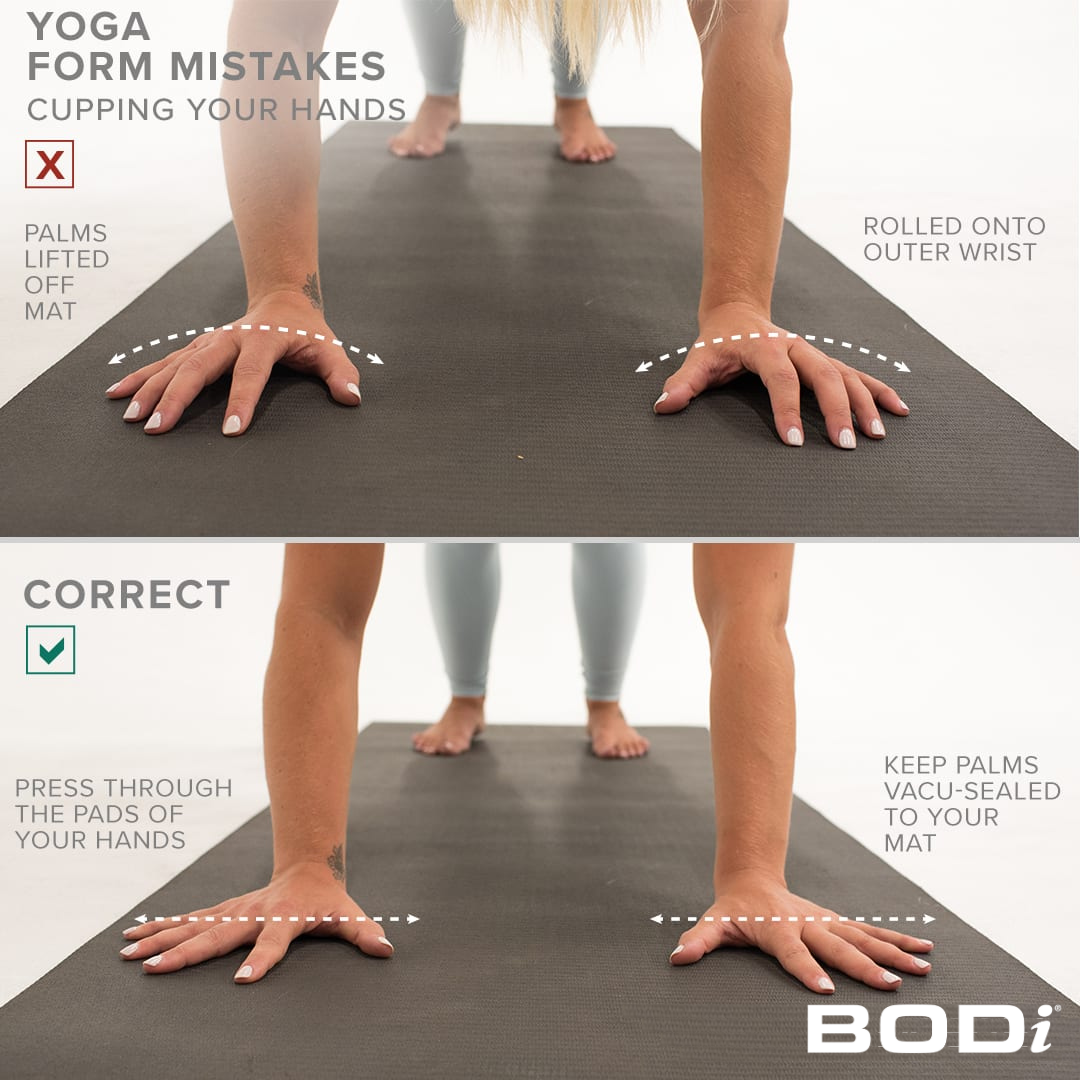
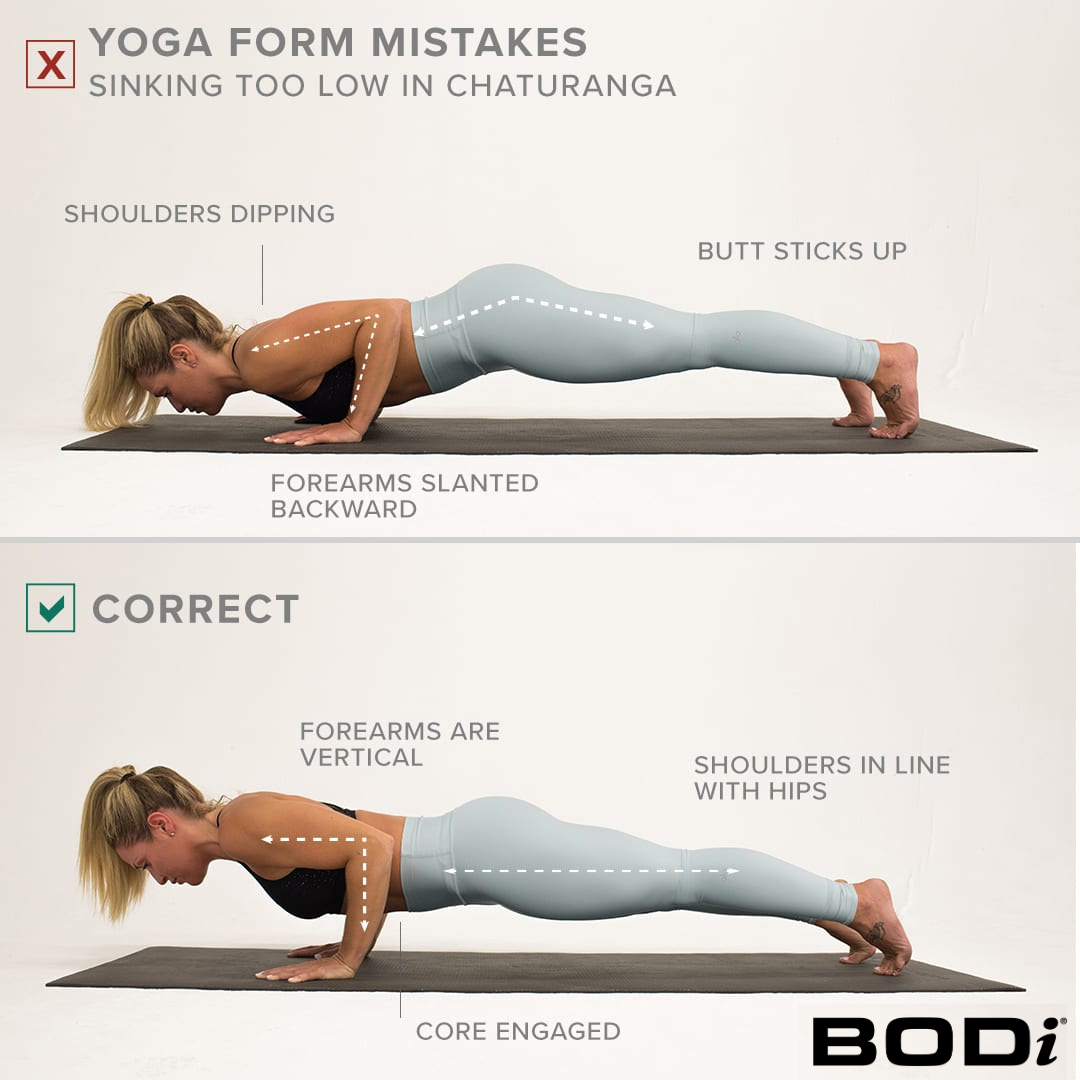
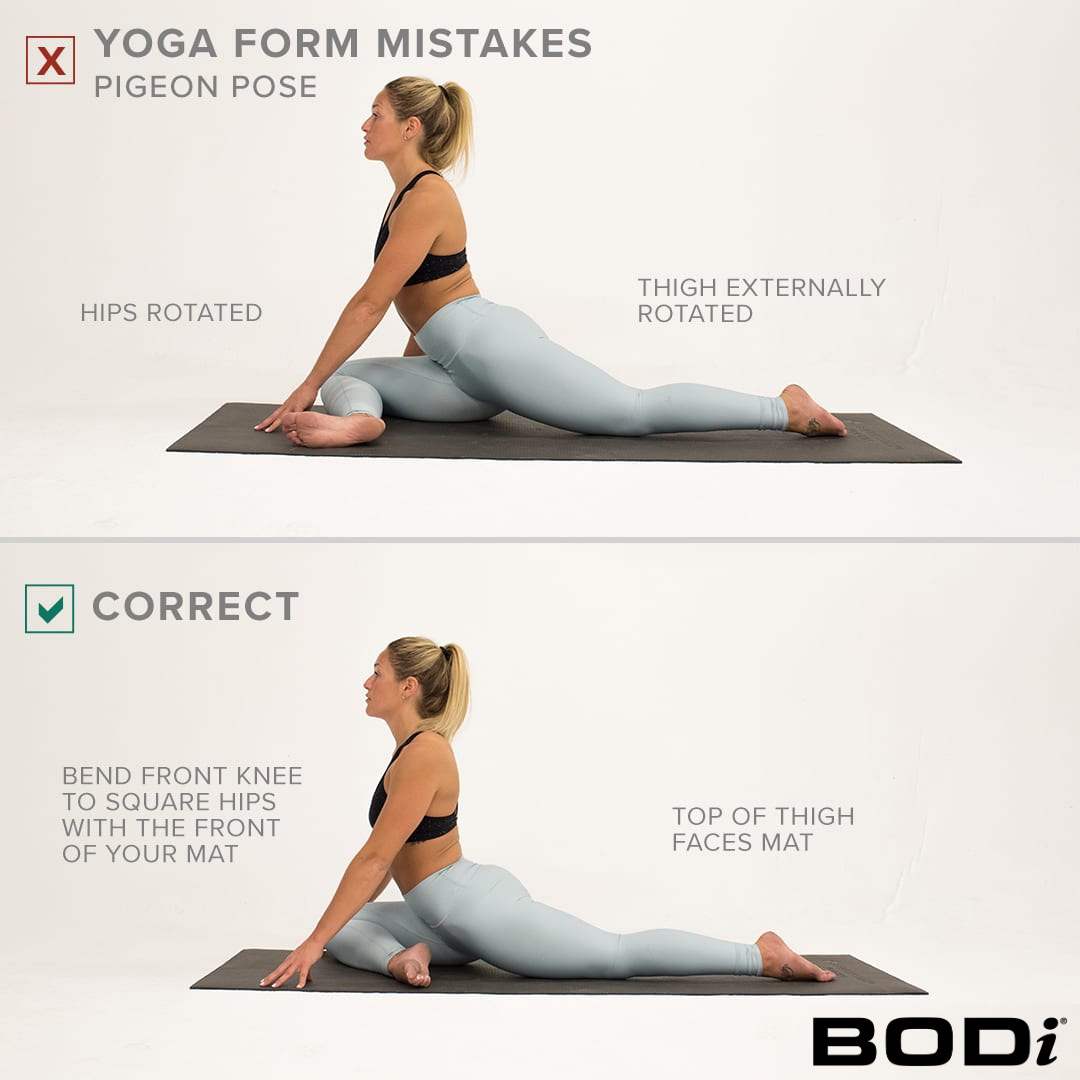
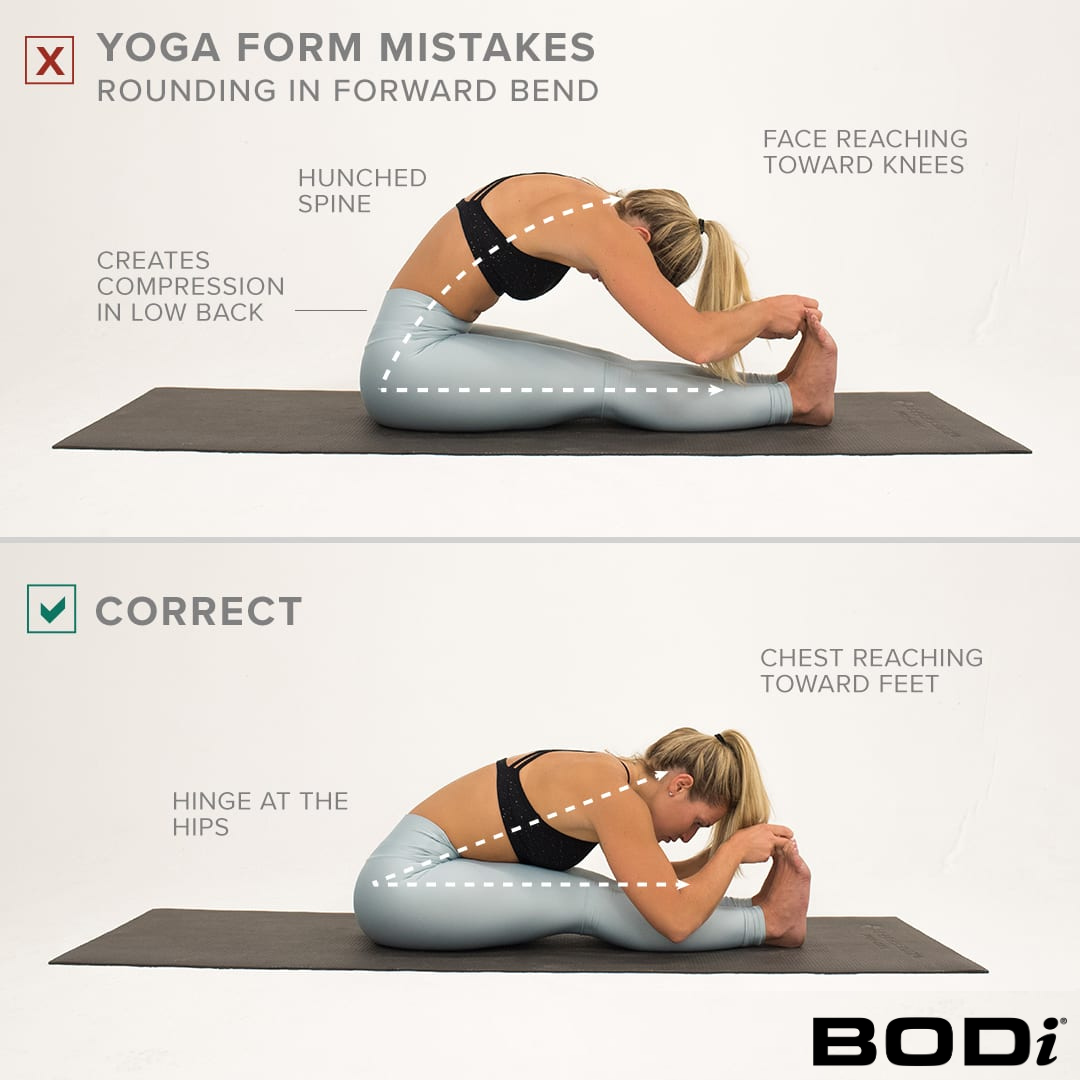
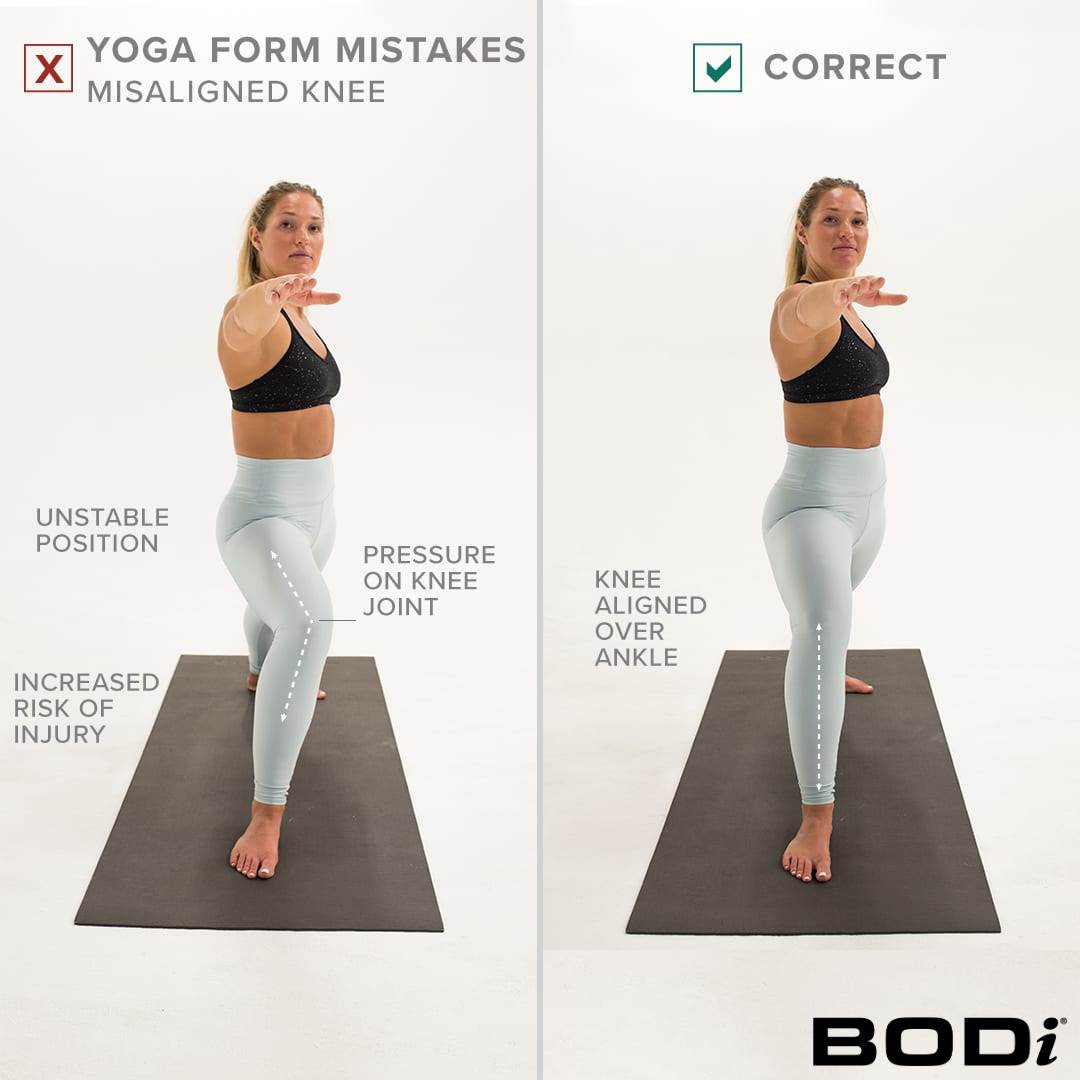
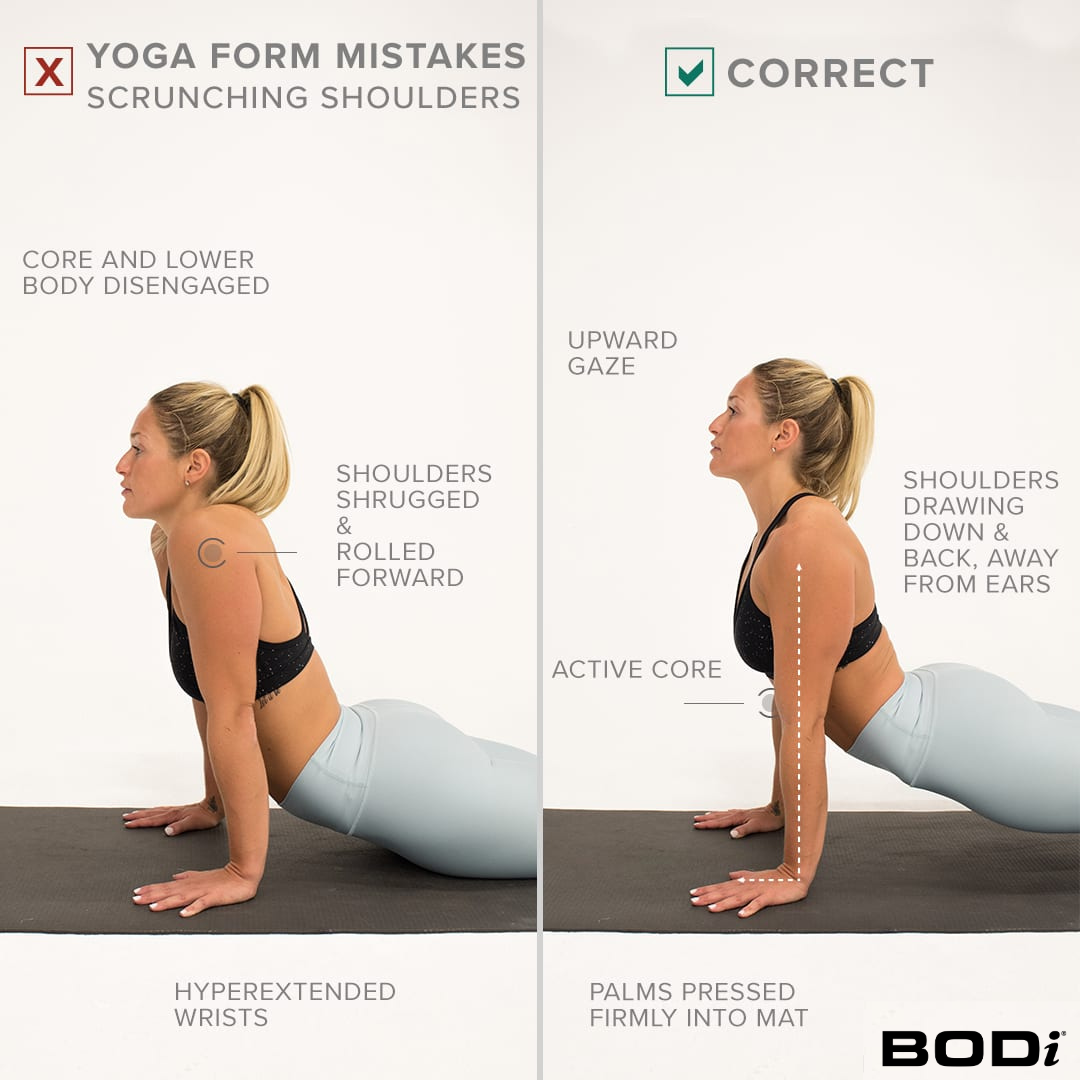
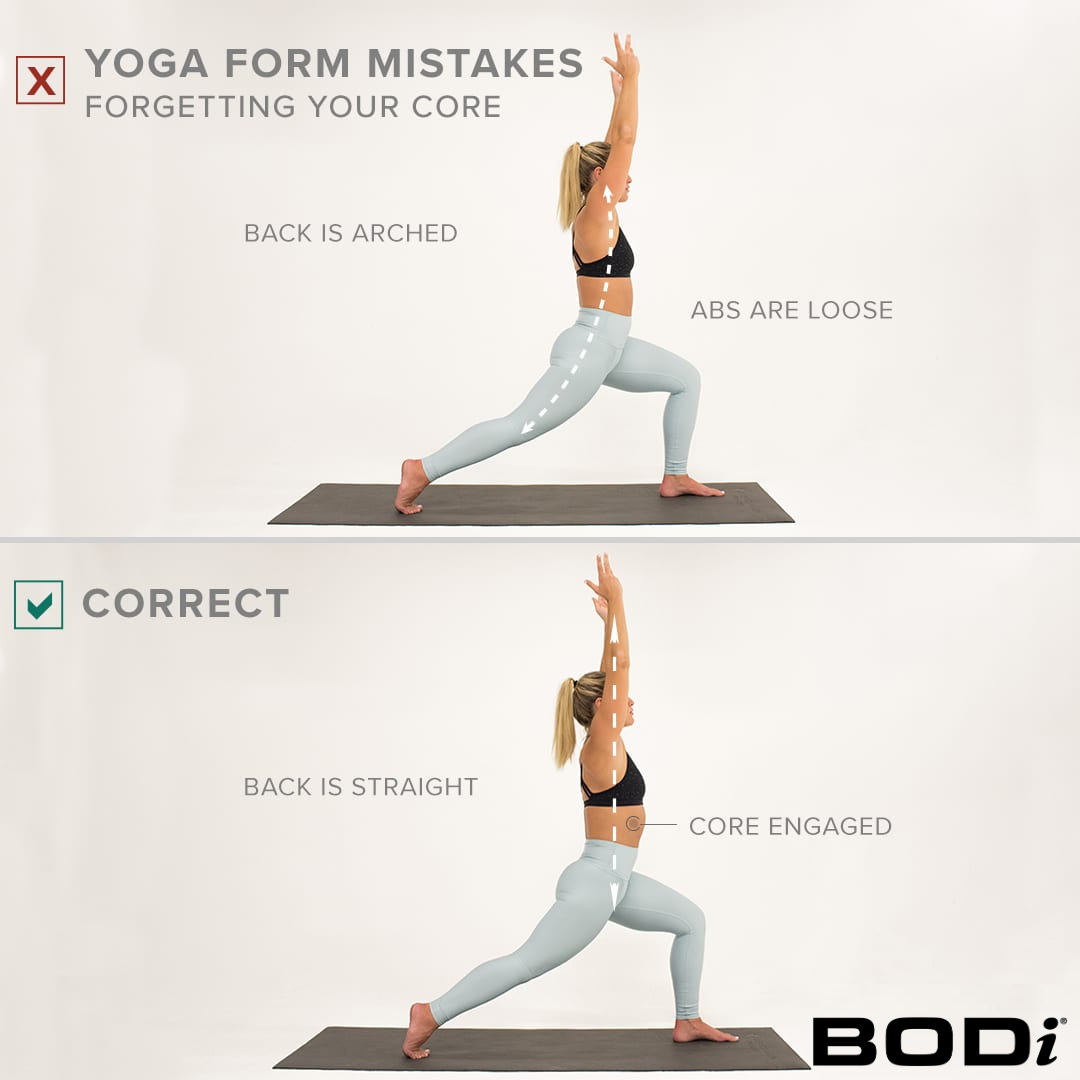
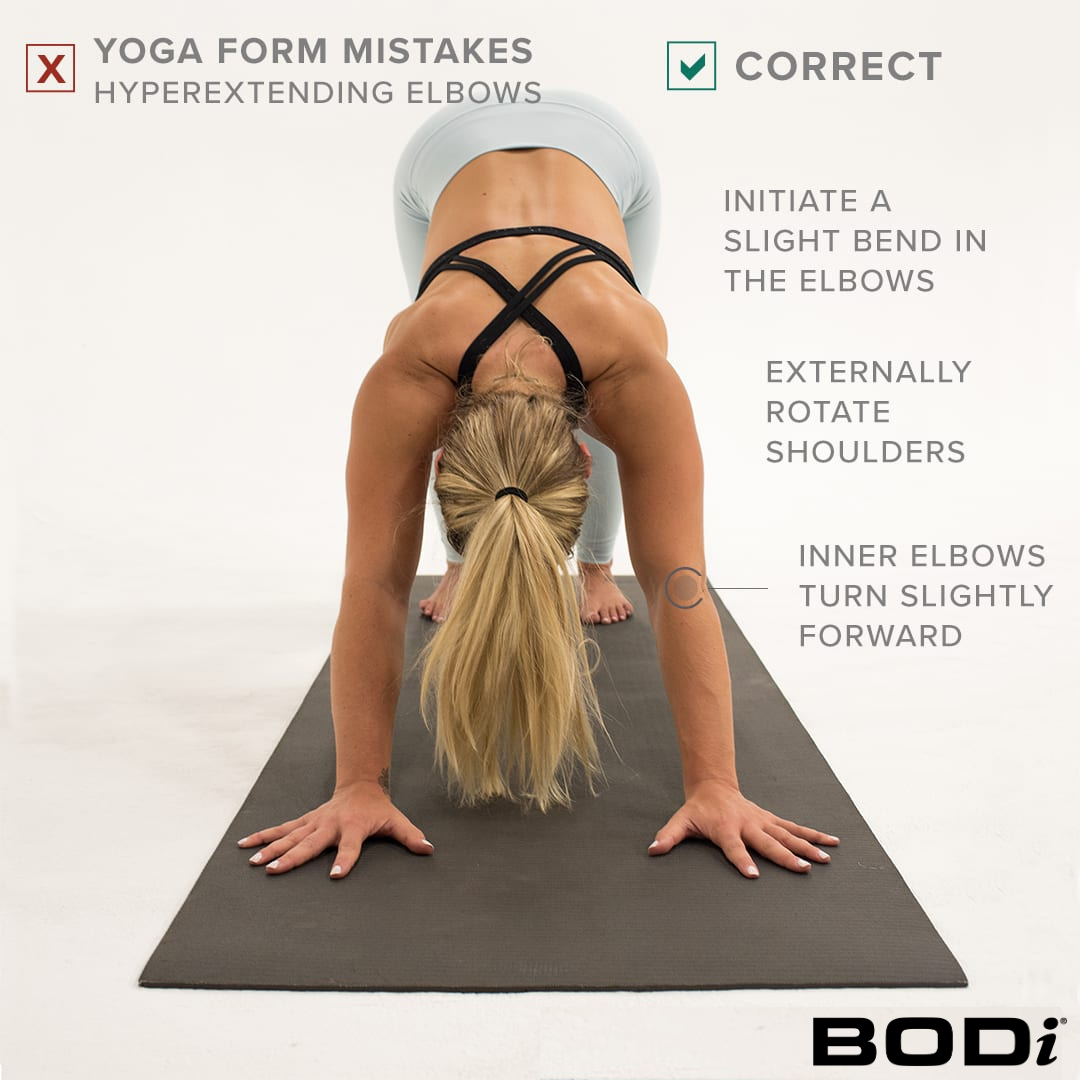
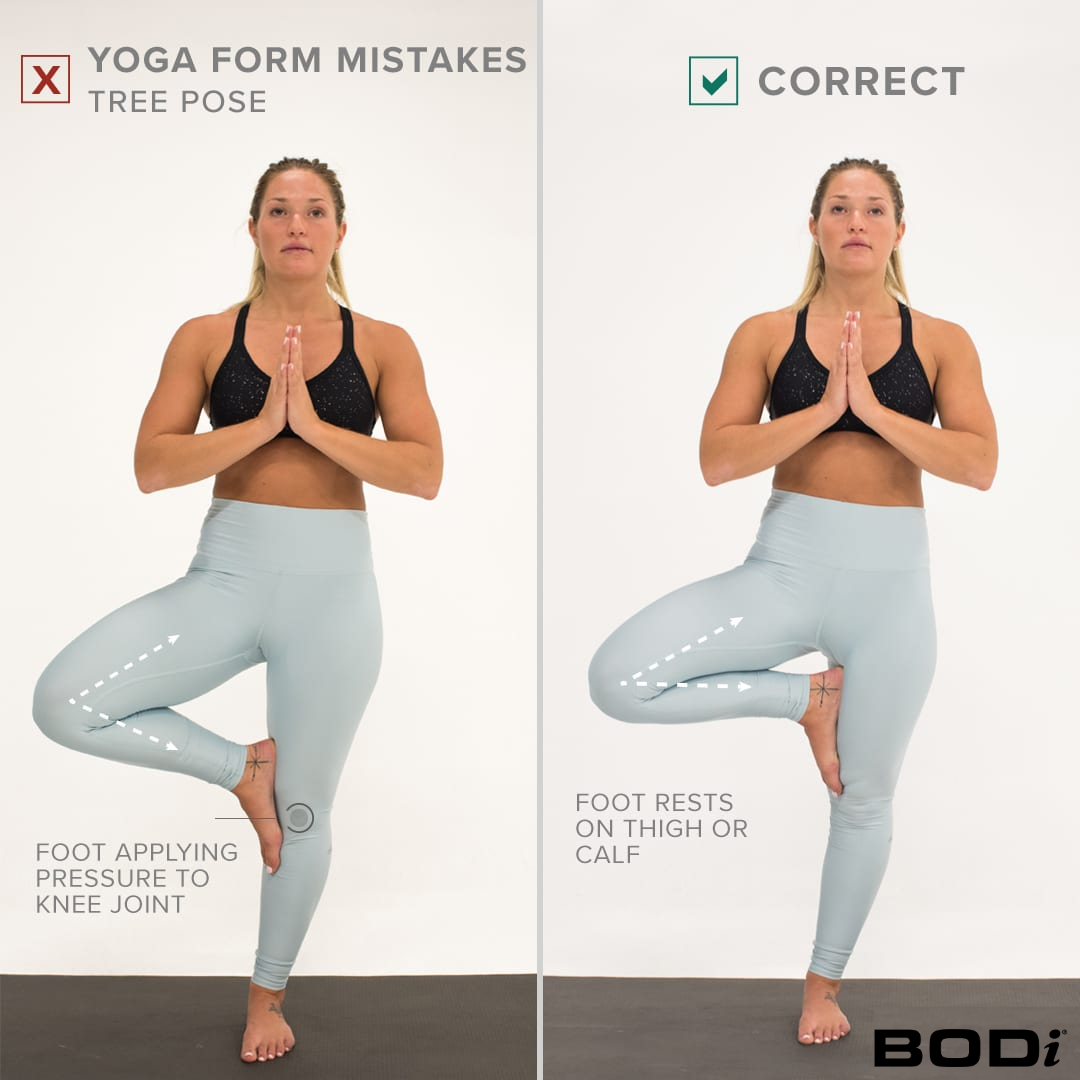
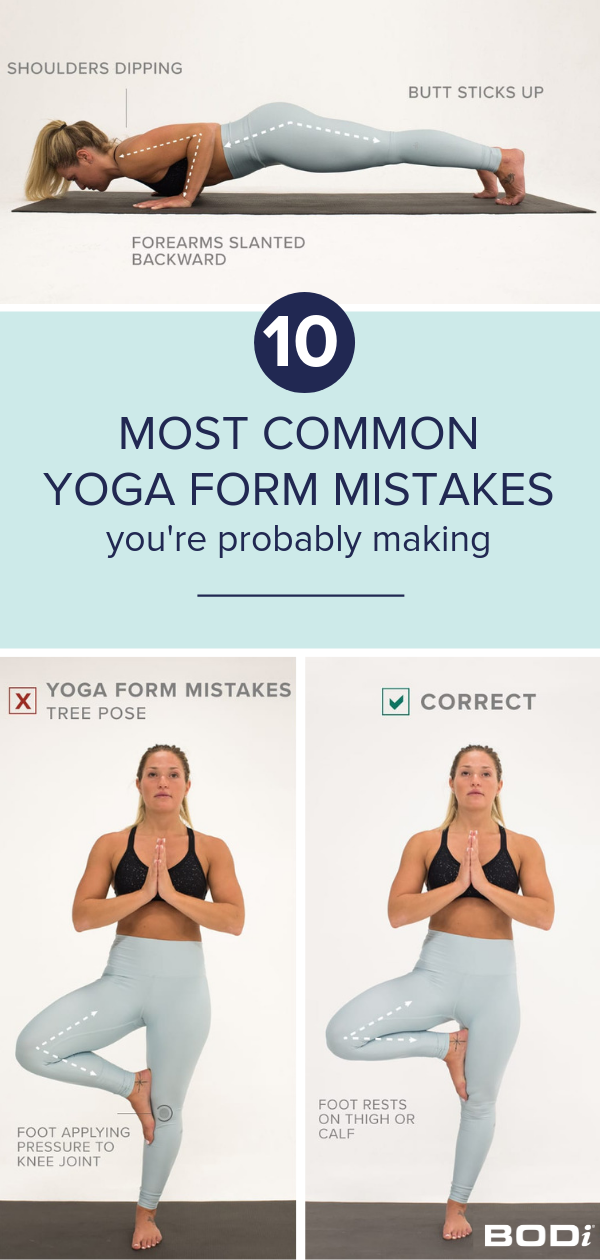
0 Comments